I Hope The New Year Puts The Light Into Our Eyes, Allows The Embers Of The Fire To Glow Within Our Spirits,

I hope the new year puts the light into our eyes, allows the embers of the fire to glow within our spirits, and brings clarity to our minds, willing and making good things happen that bring joy to our lives and the lives of others we meet along the way.
- Matt Opdyke
#scifiauthor
More Posts from Matthewjopdyke and Others
A Much-Needed Skills, Contributions, and Direction
There are many times I ask myself, why didn’t I start a trade skill from the get-go? We can never underestimate how much it is that the people who are dedicated in these professions are a large part of that which brings a higher quality of life to all of us in one form or another. No matter what we do, if kindness and well-being are parts of our central or internal value system, humanity might…
View On WordPress
Solar System: 10 Things to Know This Week
The Living Planet Edition
Whether it’s crops, forests or phytoplankton blooms in the ocean, our scientists are tracking life on Earth. Just as satellites help researchers study the atmosphere, rainfall and other physical characteristics of the planet, the ever-improving view from above allows them to study Earth’s interconnected life.
1. Life on Earth, From Space

While we (NASA) began monitoring life on land in the 1970s with the Landsat satellites, this fall marks 20 years since we’ve continuously observed all the plant life at the surface of both the land and ocean. The above animation captures the entirety of two decades of observations.
2. Watching the World Breathe
With the right tools, we can see Earth breathe. With early weather satellite data in the 1970s and ‘80s, NASA Goddard scientist Compton Tucker was able to see plants’ greening and die-back from space. He developed a way of comparing satellite data in two wavelengths.

When healthy plants are stocked with chlorophyll and ready to photosynthesize to make food (and absorb carbon dioxide), leaves absorb red light but reflect infrared light back into space. By comparing the ratio of red to infrared light, Tucker and his colleagues could quantify vegetation covering the land.
Expanding the study to the rest of the globe, the scientists could track rainy and dry seasons in Africa, see the springtime blooms in North America, and wildfires scorching forests worldwide.
3. Like Breathing? Thank Earth’s Ocean

But land is only part of the story. The ocean is home to 95 percent of Earth’s living space, covering 70 percent of the planet and stretching miles deep. At the base of the ocean’s food web is phytoplankton - tiny plants that also undergo photosynthesis to turn nutrients and carbon dioxide into sugar and oxygen. Phytoplankton not only feed the rest of ocean life, they absorb carbon dioxide - and produce about half the oxygen we breathe.

In the Arctic Ocean, an explosion of phytoplankton indicates change. As seasonal sea ice melts, warming waters and more sunlight will trigger a sudden, massive phytoplankton bloom that feeds birds, sea lions and newly-hatched fish. But with warming atmospheric temperatures, that bloom is now happening several weeks earlier - before the animals are in place to take advantage of it.
4. Keeping an Eye on Crops
The “greenness” measurement that scientists use to measure forests and grasslands can also be used to monitor the health of agricultural fields. By the 1980s, food security analysts were approaching NASA to see how satellite images could help with the Famine Early Warning System to identify regions at risk - a partnership that continues today.

With rainfall estimates, vegetation measurements, as well as the recent addition of soil moisture information, our scientists can help organizations like USAID direct emergency help.
The view from space can also help improve agricultural practices. A winery in California, for example, uses individual pixels of Landsat data to determine when to irrigate and how much water to use.
5. Coming Soon to the International Space Station

A laser-based instrument being developed for the International Space Station will provide a unique 3-D view of Earth’s forests. The instrument, called GEDI, will be the first to systematically probe the depths of the forests from space.

Another ISS instrument in development, ECOSTRESS, will study how effectively plants use water. That knowledge provided on a global scale from space will tell us “which plants are going to live or die in a future world of greater droughts,” said Josh Fisher, a research scientist at NASA’s Jet Propulsion Laboratory and science lead for ECOSTRESS.
6. Seeing Life, From the Microscopic to Multicellular
Scientists have used our vantage from space to study changes in animal habitats, track disease outbreaks, monitor forests and even help discover a new species. Bacteria, plants, land animals, sea creatures and birds reveal a changing world.

Our Black Marble image provides a unique view of human activity. Looking at trends in our lights at night, scientists can study how cities develop over time, how lighting and activity changes during certain seasons and holidays, and even aid emergency responders during power outages caused by natural disasters.
7. Earth as Analog and Proving Ground
Just as our Mars rovers were tested in Earth’s deserts, the search for life on ocean moons in our solar system is being refined by experiments here. JPL research scientist Morgan Cable looks for life on the moons of Jupiter and Saturn. She cites satellite observations of Arctic and Antarctic ice fields that are informing the planning for a future mission to Europa, an icy moon of Jupiter.

The Earth observations help researchers find ways to date the origin of jumbled, chaotic ice. “When we visit Europa, we want to go to very young places, where material from that ocean is being expressed on the surface,” she explained. “Anywhere like that, the chances of finding biomarkers goes up - if they’re there.”
8. Only One Living Planet
Today, we know of only one living planet: our own. The knowledge and tools NASA developed to study life here are among our greatest assets as we begin the search for life beyond Earth.

There are two main questions: With so many places to look, how can we home in on the places most likely to harbor life? What are the unmistakable signs of life - even if it comes in a form we don’t fully understand? In this early phase of the search, “We have to go with the only kind of life we know,” said Tony del Genio, co-lead of a new NASA interdisciplinary initiative to search for life on other worlds.

So, the focus is on liquid water. Even bacteria around deep-sea vents that don’t need sunlight to live need water. That one necessity rules out many planets that are too close or too far from their stars for water to exist, or too far from us to tell. Our Galileo and Cassini missions revealed that some moons of Jupiter and Saturn are not the dead rocks astronomers had assumed, but appear to have some conditions needed for life beneath icy surfaces.
9. Looking for Life Beyond Our Solar System
In the exoplanet (planets outside our solar system that orbit another star) world, it’s possible to calculate the range of distances for any star where orbiting planets could have liquid water. This is called the star’s habitable zone. Astronomers have already located some habitable-zone planets, and research scientist Andrew Rushby of NASA Ames Research Center is researching ways to refine the search. “An alien would spot three planets in our solar system in the habitable zone [Earth, Mars and Venus],” Rushby said, “but we know that 67 percent of those planets are not inhabited.”

He recently developed a model of Earth’s carbon cycle and combined it with other tools to study which planets in habitable zones would be the best targets to look for life, considering probable tectonic activity and water cycles. He found that larger planets are more likely than smaller ones to have surface temperatures conducive to liquid water. Other exoplanet researchers are looking for rocky worlds, and biosignatures, the chemical signs of life.
10. You Can Learn a Lot from a Dot
When humans start collecting direct images of exoplanets, even the closest ones will appear as only a handful of pixels in the detector - something like the famous “blue dot” image of Earth from Saturn. What can we learn about life on these planets from a single dot?

Stephen Kane of the University of California, Riverside, has come up with a way to answer that question by using our EPIC camera on NOAA’s DSCOVR satellite. “I’m taking these glorious pictures and collapsing them down to a single pixel or handful of pixels,” Kane explained. He runs the light through a noise filter that attempts to simulate the interference expected from an exoplanet mission. By observing how the brightness of Earth changes when mostly land is in view compared with mostly water, Kane reverse-engineers Earth’s rotation rate - something that has yet to be measured directly for exoplanets.
The most universal, most profound question about any unknown world is whether it harbors life. The quest to find life beyond Earth is just beginning, but it will be informed by the study of our own living planet.
Make sure to follow us on Tumblr for your regular dose of space: http://nasa.tumblr.com.

Have an awesome New Year! -Matthew Opdyke #scifiauthor #2019 #politicalsciencefiction #neuroscience #physics #theoreticalphysics #biotechnology #nanotechnology #longevity #CRISPR #physiology @matthewopdyke https://www.instagram.com/p/Br-QY-agvi-/?utm_source=ig_tumblr_share&igshid=1kquqo93uhplj
Great post! #NASA #solarpower #solarsystem #spaceexploration

NASA sending solar power generator developed at Ben-Gurion U to space station
A new solar power generator prototype developed by Ben-Gurion University of the Negev (BGU) and research teams in the United States, will be deployed on the first 2020 NASA flight launch to the International Space Station.
According to research published in Optics Express, the compact, microconcentrator photovoltaic system could provide unprecedented watt per kilogram of power critical to lowering costs for private space flight.
As the total costs of a launch are decreasing, solar power systems now represent a larger fraction than ever of total system cost. Optical concentration can improve the efficiency and reduce photovoltaic power costs, but has traditionally been too bulky, massive and unreliable for space use.
Together with U.S. colleagues, Prof. (Emer.) Jeffrey Gordon of the BGU Alexandre Yersin Department of Solar Energy and Environmental Physics, Jacob Blaustein Institutes for Desert Research, developed this first-generation prototype (1.7 mm wide) that is slightly thicker than a sheet of paper (.10 mm) and slightly larger than a U.S. quarter.
“These results lay the groundwork for future space microconcentrator photovoltaic systems and establish a realistic path to exceed 350 w/kg specific power at more than 33% power conversion efficiency by scaling down to even smaller microcells,” the researchers say. “These could serve as a drop-in replacement for existing space solar cells at a substantially lower cost.”
A second generation of more efficient solar cells now being fabricated at the U.S. Naval Research Labs is only 0.17 mm per side, 1.0 mm thick and will increase specific power even further. If successful, future arrays will be planned for private space initiatives, as well as space agencies pursuing new missions that require high power for electric propulsion and deep space missions, including to Jupiter and Saturn.

Enjoy this First-Year-Anniversary compilation of all of my works in one title: A Cosmic Legacy: From Earth to the Stars This title includes the following works wrapped up into one story: Further Than Before: Pathway to the Stars, Part 1 Further Than Before: Pathway to the Stars, Part 2 Pathway to the Stars: Part 1, Vesha Celeste Pathway to the Stars: Part 2, Eliza Williams Pathway to the Stars: Part 3, James Cooper Pathway to the Stars: Part 4, Universal Party Pathway to the Stars: Part 5, Amber Blythe Pathway to the Stars: Part 6, Erin Carter "Our beautiful mother world ached for a reprieve from the injustices of many, courtesy of cultures and governance systems, that forgot how to love, how to be kind, how to include others, and how to think beyond the scope of greed and power, but within the visions of shared joy and well-being." Together with the organization Eliza Williams founded, called Pathway, she and her growing team will take us on a fantastical and Utopian journey to get us out and into the farthest reaches of space. There are dilemmas such as the physiological effects of space on each of us, as well as the need for longevity and a desire to still be able to visit loved ones following long journeys. Eliza and her team develop capabilities, so we can overcome the challenges ahead and are determined to stabilize a rocky economy, wipe away suffering, violence, disease, cartels, terrorism, and trafficking in persons. They work together to tame seismic activity, weather, and fires. She and her friends tackle ways to prevent extinction and provide solutions to quality of life concerns. They even consider the longevity of our Sun and our Earth's capacity to preserve life. Eliza tackles each of these issues to get us out, and into the stars, so we can begin our biggest quest--to help our Universe breathe ever so lightly. #amazing #science #fiction #novels #best #new #books #scifi #online #read #longevity #CRISPR #physiology #neurology #physics #theoretical #philosphical #politcal #educational #STEM #AmazonAuthor #BarnesAndNobleAuthor #wellbeing #quality #biotech #nanotech #SpaceOpera #astronomy #selfpublished https://www.instagram.com/p/B2GkDbYBs0y/?igshid=ufavr7j6lsy1
Nice view of Earth...
Our pale blue dot, planet Earth, is seen in this video captured by NASA astronaut Jack Fischer from his unique vantage point on the International Space Station. From 250 miles above our home planet, this time-lapse imagery takes us over the Pacific Ocean’s moon glint and above the night lights of San Francisco, CA. The thin hue of our atmosphere is visible surrounding our planet with a majestic white layer of clouds sporadically seen underneath.
The International Space Station is currently home to 6 people who are living and working in microgravity. As it orbits our planet at 17,500 miles per hour, the crew onboard is conducting important research that benefits life here on Earth.
Make sure to follow us on Tumblr for your regular dose of space: http://nasa.tumblr.com

Must watch: ATB Future Memories (YouTube) https://youtu.be/QpLrjifXT1w https://www.instagram.com/p/BsPJ-vfH-Jr/?utm_source=ig_tumblr_share&igshid=zd40u6v4m410

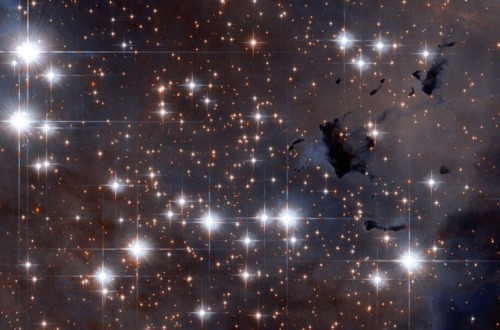

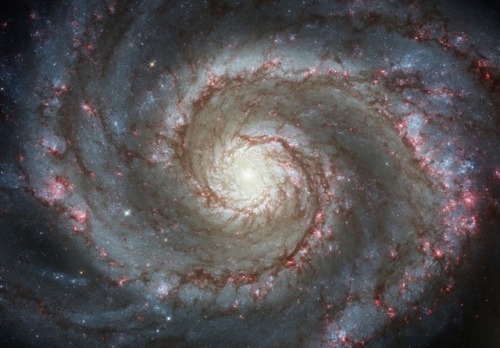



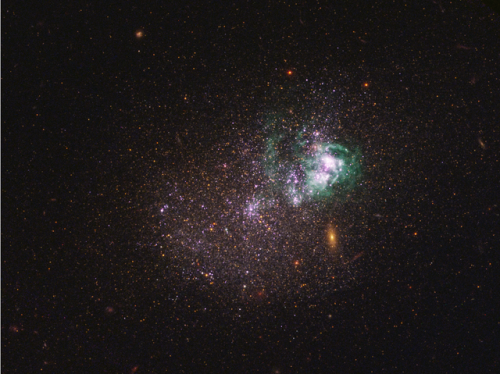
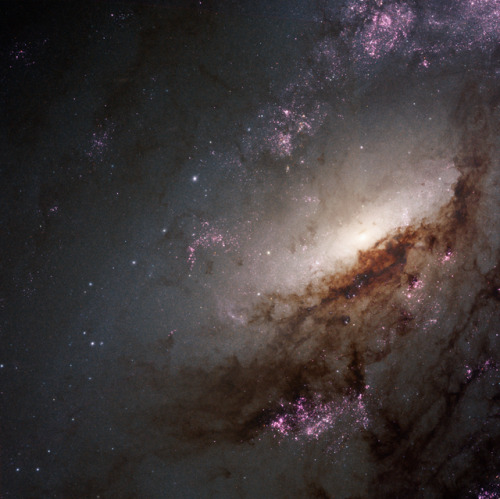
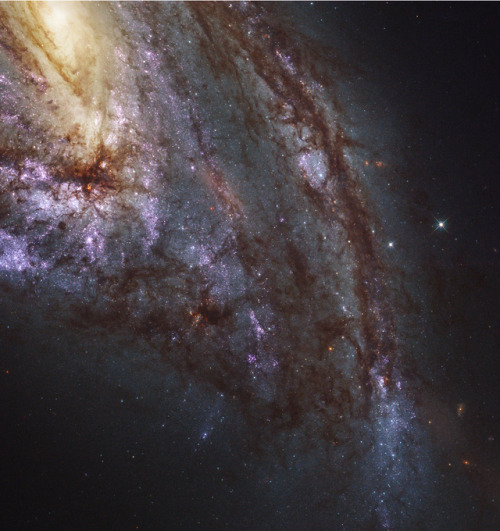
Hubble Catches New Stars, Individually, Forming In Galaxies Beyond The Milky Way
“There are a massive variety of star-forming regions nearby, and Hubble’s new Legacy ExtraGalactic UV Survey (LEGUS) is now the sharpest, most comprehensive one ever. By imaging 50 nearby, star-forming spiral and dwarf galaxies, astronomers can see how the galactic environment affects star-formation.”
Within galaxies, new stars are going to be formed from the existing population of gas. But how that gas collapses and forms stars, as well as the types, numbers, and locations of the stars that will arise, is highly dependent on the galactic environment into which they are born. Dwarf galaxies, for example, tend to form stars when a nearby gravitational interaction triggers them. These bursts occur periodically, leading to multiple populations of stars of different ages. Spirals, on the other hand, form their new stars mostly along the lines traced by their arms, where the dust and gas is densest. Thanks to the Hubble Space Telescope, we’re capable of finding these stars and resolving them individually, using a combination of optical and ultraviolet data.
The best part? These are individually resolved stars from well outside our own galaxy: in 50 independent ones. Here’s what Hubble’s new LEGUS survey is revealing.
What are the Universe’s Most Powerful Particle Accelerators?
Every second, every square meter of Earth’s atmosphere is pelted by thousands of high-energy particles traveling at nearly the speed of light. These zippy little assailants are called cosmic rays, and they’ve been puzzling scientists since they were first discovered in the early 1900s. One of the Fermi Gamma-ray Space Telescope’s top priority missions has been to figure out where they come from.

“Cosmic ray” is a bit of a misnomer. Makes you think they’re light, right? But they aren’t light at all! They’re particles that mostly come from outside our solar system — which means they’re some of the only interstellar matter we can study — although the Sun also produces some. Cosmic rays hit our atmosphere and break down into secondary cosmic rays, most of which disperse quickly in the atmosphere, although a few do make it to Earth’s surface.
Cosmic rays aren’t dangerous to those of us who spend our lives within Earth’s atmosphere. But if you spend a lot of time in orbit or are thinking about traveling to Mars, you need to plan how to protect yourself from the radiation caused by cosmic rays.

Cosmic rays are subatomic particles — smaller particles that make up atoms. Most of them (99%) are nuclei of atoms like hydrogen and helium stripped of their electrons. The other 1% are lone electrons. When cosmic rays run into molecules in our atmosphere, they produce secondary cosmic rays, which include even lighter subatomic particles.

Most cosmic rays reach the same amount of energy a small particle accelerator could produce. But some zoom through the cosmos at energies 40 million times higher than particles created by the world’s most powerful man-made accelerator, the Large Hadron Collider. (Lightning is also a pretty good particle accelerator).

So where do cosmic rays come from? We should just be able to track them back to their source, right? Not exactly. Any time they run into a strong magnetic field on their way to Earth, they get deflected and bounce around like a game of cosmic pinball. So there’s no straight line to follow back to the source. Most of the cosmic rays from a single source don’t even make it to Earth for us to measure. They shoot off in a different direction while they’re pin balling.

Photo courtesy of Argonne National Laboratory
In 1949 Enrico Fermi — an Italian-American physicist, pioneer of high-energy physics and Fermi satellite namesake — suggested that cosmic rays might accelerate to their incredible speeds by ricocheting around inside the magnetic fields of interstellar gas clouds. And in 2013, the Fermi satellite showed that the expanding clouds of dust and gas produced by supernovas are a source of cosmic rays.

When a star explodes in a supernova, it produces a shock wave and rapidly expanding debris. Particles trapped by the supernova remnant magnetic field bounce around wildly.

Every now and then, they cross the shock wave and their energy ratchets up another notch. Eventually they become energetic enough to break free of the magnetic field and zip across space at nearly the speed of light — some of the fastest-traveling matter in the universe.

How can we track them back to supernovas when they don’t travel in a straight line, you ask? Very good question! We use something that does travel in a straight line — gamma rays (actual rays of light this time, on the more energetic end of the electromagnetic spectrum).
When the particles get across the shock wave, they interact with non-cosmic-ray particles in clouds of interstellar gas. Cosmic ray electrons produce gamma rays when they pass close to an atomic nucleus. Cosmic ray protons, on the other hand, produce gamma rays when they run into normal protons and produce another particle called a pion (Just hold on! We’re almost there!) which breaks down into two gamma rays.

The proton- and electron-produced gamma rays are slightly different. Fermi data taken over four years showed that most of the gamma rays coming from some supernova remnants have the energy signatures of cosmic ray protons knocking into normal protons. That means supernova remnants really are powerful particle accelerators, creating a lot of the cosmic rays that we see!
There are still other cosmic ray sources on the table — like active galactic nuclei — and Fermi continues to look for them. Learn more about what Fermi’s discovered over the last 10 years and how we’re celebrating its accomplishments.
Make sure to follow us on Tumblr for your regular dose of space: http://nasa.tumblr.com.
